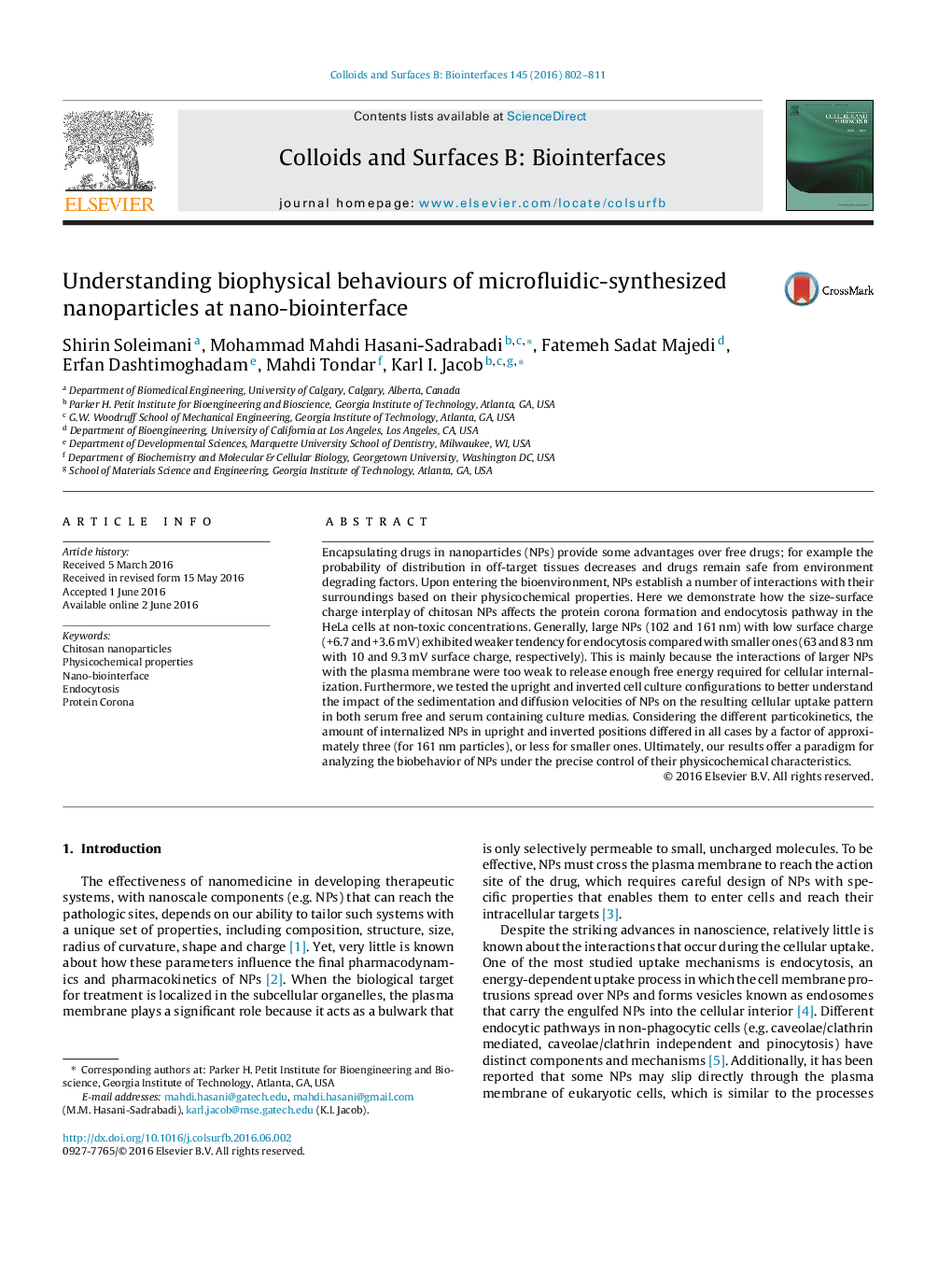| کد مقاله | کد نشریه | سال انتشار | مقاله انگلیسی | نسخه تمام متن |
|---|---|---|---|---|
| 599007 | 1454259 | 2016 | 10 صفحه PDF | دانلود رایگان |
• Polymeric nanoparticles carefully made using microfluidic platform.
• The high level of control over size, surface charge, compactness is achieved.
• We tried to explore nano-biointeractions happening when NPs face proteins and cells.
• Effect of nanoparticles physicochemical on their cellular internalization was evaluated.
Encapsulating drugs in nanoparticles (NPs) provide some advantages over free drugs; for example the probability of distribution in off-target tissues decreases and drugs remain safe from environment degrading factors. Upon entering the bioenvironment, NPs establish a number of interactions with their surroundings based on their physicochemical properties. Here we demonstrate how the size-surface charge interplay of chitosan NPs affects the protein corona formation and endocytosis pathway in the HeLa cells at non-toxic concentrations. Generally, large NPs (102 and 161 nm) with low surface charge (+6.7 and +3.6 mV) exhibited weaker tendency for endocytosis compared with smaller ones (63 and 83 nm with 10 and 9.3 mV surface charge, respectively). This is mainly because the interactions of larger NPs with the plasma membrane were too weak to release enough free energy required for cellular internalization. Furthermore, we tested the upright and inverted cell culture configurations to better understand the impact of the sedimentation and diffusion velocities of NPs on the resulting cellular uptake pattern in both serum free and serum containing culture medias. Considering the different particokinetics, the amount of internalized NPs in upright and inverted positions differed in all cases by a factor of approximately three (for 161 nm particles), or less for smaller ones. Ultimately, our results offer a paradigm for analyzing the biobehavior of NPs under the precise control of their physicochemical characteristics.
Figure optionsDownload as PowerPoint slide
Journal: Colloids and Surfaces B: Biointerfaces - Volume 145, 1 September 2016, Pages 802–811
